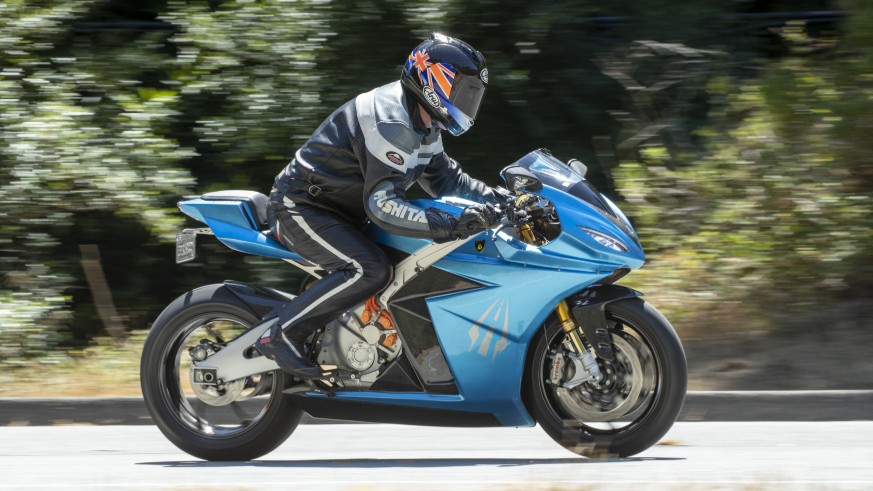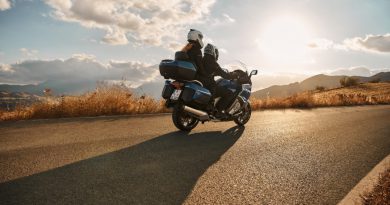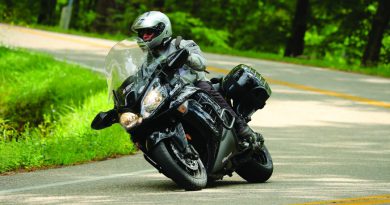Is Lightning Leading the Way in Electric Sport Touring?
Sport touring riders measure motorcycles by their ability to cover long miles with speed, comfort, and confidence. For many, that image includes a gas tank, an exhaust note, and the rhythm of shifting gears. Electric motorcycles? Until recently, they’ve barely been in the conversation.
For years, electrics were typecast as urban commuters or weekend novelties – capable and fun, but not machines for 500-mile days. Range anxiety, slow charging, and skepticism about the riding experience kept them at the edges of touring.
Lightning Motorcycles (lightningmotorcycle.com) wants to change that. Known for blistering performance on the racetrack and a desire to push the limits of battery and motor technology, the California-based company is targeting riders who crave twisty backroads and long-distance adventure.

We spoke with Lightning Motorcycles Founder and CEO Richard Hatfield, who sums up Lightning’s philosophy this way: “We didn’t want to build an electric motorcycle that was almost a motorcycle, but it was electric. We wanted to build a motorcycle that could compete at the highest levels, and then bring that technology to riders.”
Lightning has the racing credentials to back that up. Its LS-218 superbike set a 218-mph record at Bonneville. The company has raced at Pikes Peak and Le Mans with riders like Carlin Dunne and Miguel Duhamel. That pedigree informs the engineering behind Lightning’s current lineup – and the new models aimed squarely at sport touring.
The Central Question
Is Lightning Motorcycles showing the way for electrics in sport touring?
To find out, we explored the three biggest concerns most riders have about electric touring: range, charging, and whether an electric can feel like a “real” motorcycle.
Challenge 1: Range Between Charges
Long-distance riders live by range. It’s not just how far you can go on a tank (or battery), but how predictable that range is at highway speeds.
Hatfield acknowledged the concern but pointed to steady progress: “At a 70-mile-an-hour cruise, our bikes are about 110 to 130 miles of range, depending on terrain, acceleration, and rider size. With our top-spec 29 kilowatt-hour pack, you’re closer to 200 miles. And riders can choose different battery options to balance long range with charge speed or high-power performance.”
Those figures reflect real-world highway use, not optimistic city-cycle ratings. Riders can also tailor the bike’s “personality” through battery choice – long-range packs for cross-country miles, or lighter high-power packs for aggressive riding. Lightning’s forthcoming adventure-sport model aims squarely at the sweet spot for touring range and performance.
Challenge 2: Charge Time and Charger Availability
The next concern is charging. Gas stops take five minutes. Nobody wants to sit for hours at a charging station mid-ride.
Here again, Lightning has an answer. “A fast charge right now is in the 10-minute range, basically from 20% to 80%,” Hatfield said. “After that, how long it takes depends on how aggressively you’ve been riding and the temperature. But even at today’s network speeds, you can charge quickly enough to stretch your legs, grab a coffee, and be back on the road.”
Lightning’s latest bikes use both 400-volt and 800-volt architectures, compatible with the growing number of high-speed CCS chargers. The higher-voltage 218R architecture allows even faster charging at stations designed for electric cars.
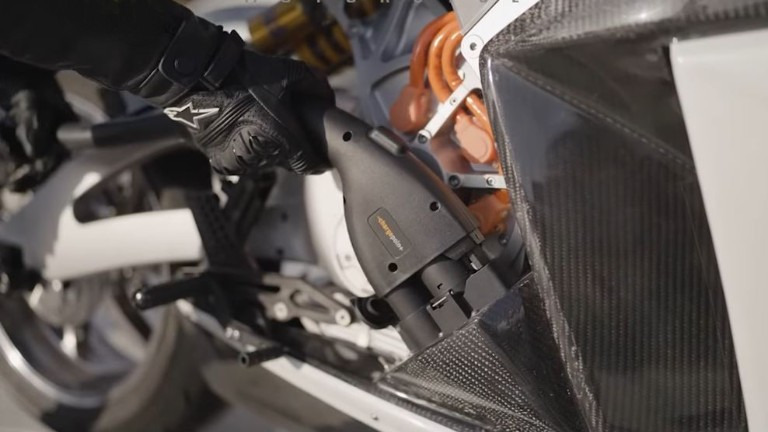
And infrastructure is improving rapidly. “On the West Coast, you’re never far from a high-power charger,” Hatfield noted. “I know people who are doing cross-country rides on electric bikes now and not struggling to find charging.” Many hotels already have Level 2 chargers; highway rest stops and city centers increasingly have Level 3 DC fast chargers.
Charging will never exactly mirror the speed of a gas fill-up, but on a touring day broken into two- or three-hour legs, a 10- to 20-minute charge fits naturally into the rhythm of rest breaks.
Challenge 3: Are Electrics ‘Real’ Motorcycles?
Beyond range and charge time, there’s a cultural question: can an electric ever feel like a real motorcycle? Riders are attached to the sensory connection of sound, vibration, and shifting. Some even use downshifts for corner setup and engine braking.
Hatfield has heard the doubts. He’s also seen them vanish when riders get on the bike. “Virtually every pro rider that rode our bikes told us after about the third or fourth corner, they never thought about the clutch again. The ability to have all the torque you want, and regulate it precisely, means you’re never worrying about torque peaks or downshifts. It lets you run the bike right on the edge.”
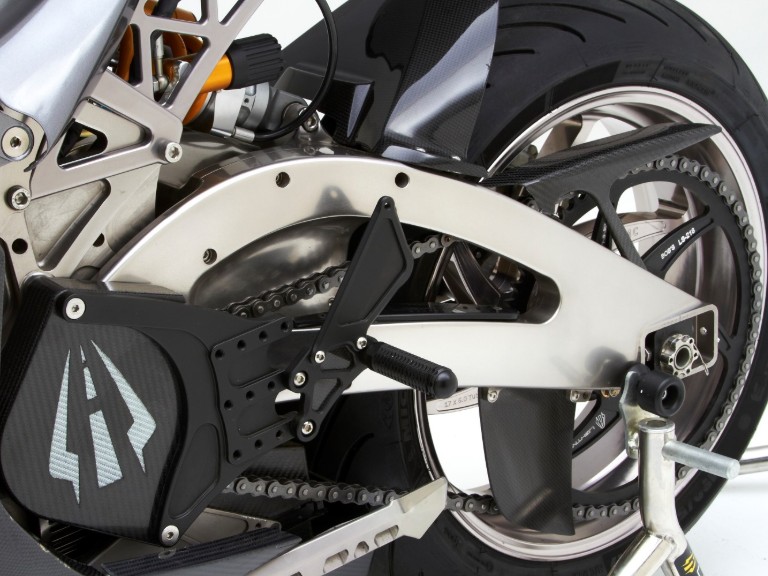
That torque delivery has practical benefits. At Pikes Peak, Carlin Dunne credited Lightning’s smooth, predictable torque for letting him race more aggressively with confidence in traction. There’s no abrupt torque peak to break the rear tire loose mid-corner – just a linear pull controllable to a thousandth of a newton-meter.
We didn’t want to build an electric motorcycle that was almost a motorcycle, but it was electric. We wanted to build a motorcycle that could compete at the highest levels, and then bring that technology to riders. — Richard Hatfield; Founder and CEO, Lightning Motorcycles.
For riders who miss the feel of engine braking, Lightning provides a configurable solution. Its companion app lets you dial regenerative braking to your preference, from mild coasting to strong deceleration, mimicking the feel of rolling off on a big-bore gas bike.
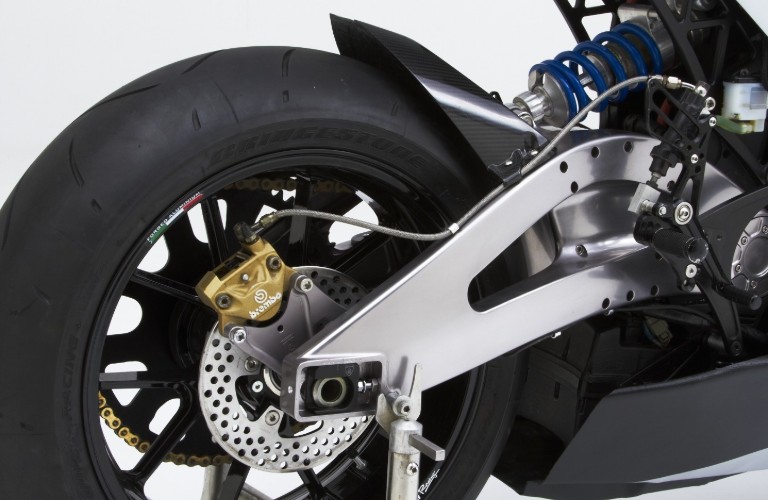
And Lightning builds its bikes with premium hardware familiar to sport touring riders: Öhlins suspension, Brembo brakes, forged wheels. The MotoGP-inspired frame uses the battery as a stressed member to save weight without sacrificing rigidity. The result is a machine that handles and stops like any top-shelf sport tourer – just without the noise or heat.
A Vision for Electric Sport Touring
Lightning isn’t just refining its current bikes; it’s developing new models to meet touring riders where they are. Hatfield described one in testing as “a crossover on the adventure edge of sport touring – lighter, agile, and capable, more like a Ducati Multistrada or KTM 890 than a GS.” No release date yet, but the intent is clear: build an electric designed for real-world touring and performance.
The long-term advantages of electric touring are compelling. With one moving part in the motor, there’s little to wear out. “Our first LS-218 set speed records, raced all over, and the only things we ever had to replace were tires, brake pads, and chains,” Hatfield said. “Nothing inside the motor.”
Modern batteries are rated for 1,500+ charge cycles, which at 150 miles per cycle is roughly 150,000 miles before dropping to 80% of original capacity. Even at that point, the bike is fully rideable – just with slightly reduced range. Hatfield noted that General Motors testing on similar motors suggests 800,000 miles of life in far heavier vehicles; on a motorcycle, you’re unlikely to ever “wear out” the motor.
Lightning sells direct to consumers, Tesla-style, from its Hollister, California facility. It’s a boutique manufacturer today, but with ambition to grow both volume and model range. Every bike is assembled in the U.S., with many components designed in-house.
Why Not Electric?
If charging weren’t an issue – and it’s quickly becoming less of one – why wouldn’t a sport touring rider consider electric? There’s virtually no routine maintenance beyond tires, brake pads, and chains. No valve checks, no oil changes, no heat pouring off the engine on a summer day.
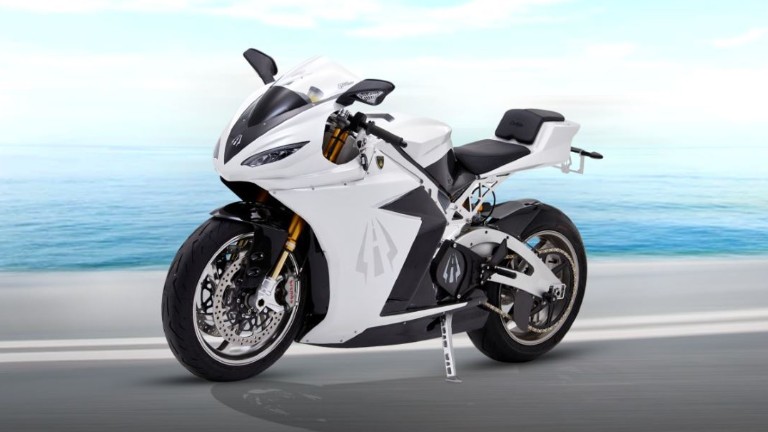
The riding experience is different, but not lesser. “Most pro riders told us if all else was equal, they’d be quicker around a track on an electric than a gas bike,” Hatfield said. “You don’t have to manage shifting or torque peaks; you can focus on the contact patch.”
That advantage translates to the street too: instant torque for passing, low vibration for long-distance comfort, and the quiet to actually hear your riding buddies at a stop.
Don’t Knock It Until You Try It
So, is Lightning showing the way for electrics in sport touring? The hurdles of range, charging, and perception aren’t entirely gone, but Lightning is working hard to provide real answers. Touring-capable range, sub-20-minute fast charging, premium chassis and components, and a riding experience that surprises skeptics.
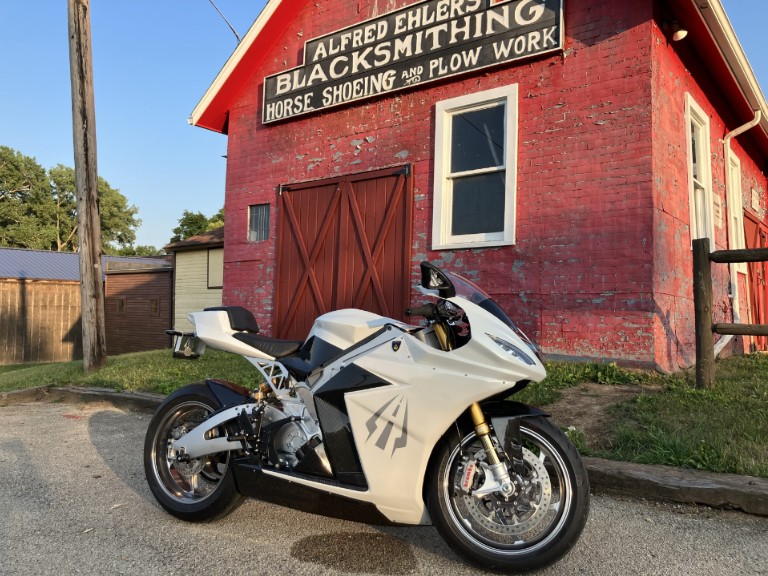
Hatfield offered this closing thought: “The single best sales tool we have is getting an experienced rider on the bike. It’s typically an eye-opening experience. Don’t knock it until you try it.”
For sport touring riders open to the future, Lightning Motorcycle’s bikes – and its vision – make a compelling case that electric isn’t just coming. It’s already here.
[placeholder text]
Your response is used by American Sport Touring only, we do not store or sell your information.
Please read our Privacy Policy.

by John DeVitis, Editor and Publisher
John DeVitis, Editor & Publisher of American Sport Touring, has spent years riding and writing with a focus on long-distance, performance-oriented motorcycling. His time on the road has revealed little-known routes across the United States and Canada, along with practical insights into the bikes, gear, and techniques that matter to sport touring riders. He draws on this experience, together with a background in digital publishing, to guide the editorial principles and clear vision behind American Sport Touring, delivering content riders can trust.

